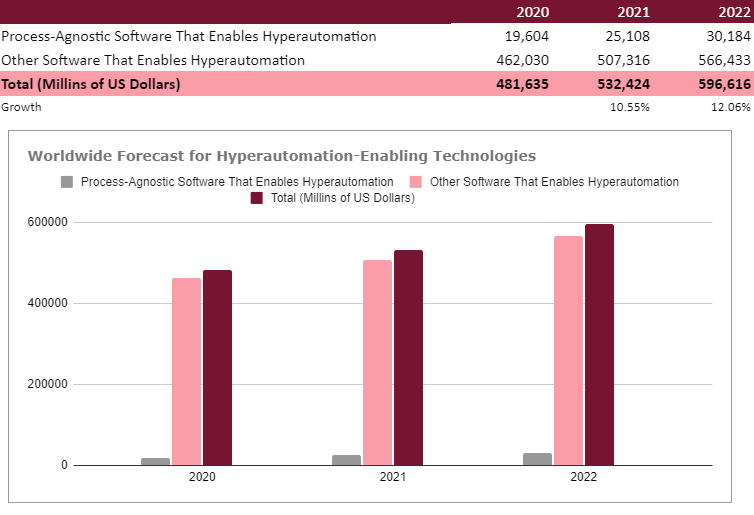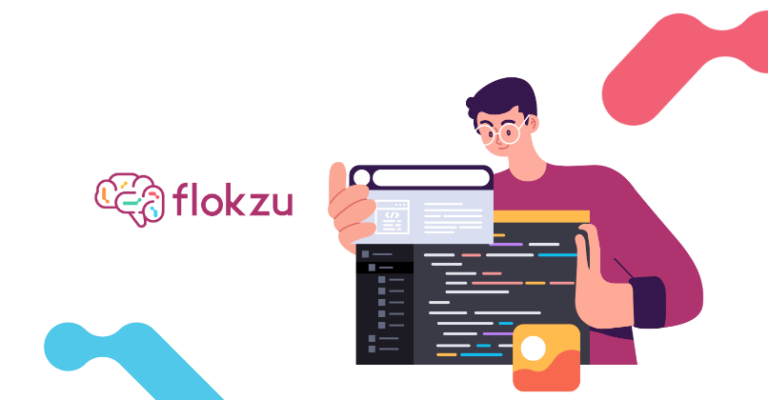The prestigious technology consulting firm Gartner published this article on April 28th and forecasts that the global market for hyperautomation of processes will reach $600 billion by 2022.
“Hyperautomation has shifted from an option to a condition of survival”. “Organizations will require more IT and business process automation as they are forced to accelerate digital transformation plans in a post-COVID-19, digital-first world.”
Fabrizio Biscotti, research vice president at Gartner
These forecasts are aligned with what we at Flokzu have seen during 2020 and so far in 2021. A clear and sustained increase in the demand for technological solutions that enable the rapid and effective digitization of organizations. They all already know that the future is digital, but much more digital than was predicted 2 years ago. And those who do not digitize quickly will find it difficult to survive.
The constraints of the pandemic
In the short term, there were, and still are, significant economic constraints resulting from the pandemic.
At the government client level, most public agencies had to make cuts in their technology investments during 2020 to address higher priority healthcare expenditures.
In the private sector, we saw many organizations in different parts of the world go bankrupt due to the pandemic, or have to significantly reduce their activity. Naturally, this was reflected in lower demand in the short term for new technology products and investments.
The opportunities of the pandemic
On the other hand, many new customers joined Flokzu as part of their efforts to digitize their processes and operations quickly. The low investment required, the simplicity of use, and the immediacy of results, together with the low risk of testing and using all the software in the cloud, helped many public and private organizations make the decision to adopt a BPM Suite in the cloud.
In addition, organizations that were already Flokzu customers greatly accelerated the incorporation of new users and processes. Since they already knew the tool and its possibilities, it was a very direct way to add processes, significantly increasing the degree of digitization and automation of their operations.
Tools for hyperautomation of processes forecast.
Gartner in its report separates the tools that enable hyperautomation between those horizontal software products (that serve any industry) and that are specifically related to processes, and other software products that are not strictly linked to process management but also help the hyperautomation of processes.
Between the two, he expects a compound year-on-year growth of more than 10%, which is a big number for mature technologies.

The next few years…
Our outlook for the next 3 years is very positive. Garnter’s forecasts are in line with our observations of the market. The adoption of tools for the hyperautomation of processes will continue to grow.
Flokzu, positioned in the Top 5 in the world in the cloud BPM category, has enormous potential to scale, given that it is the customers themselves who model and automate their processes autonomously.
We are convinced that the future of process automation goes hand in hand with empowering business users so that without programming or complex configurations they can build their own solutions (this is called low-code / no-code).
Some of the expected benefits of doing so are:
- Improve results fast (cost reduction, higher production). Organizations must become more competitive quickly to stay in the market and grow.
- Talent attraction and retention. In a more global competition for talent that can work from anywhere, having modern and collaborative tools for their daily remote work is key.
- Integrate the entire value chain, from suppliers to customers in a single digital process.
- Visibility and Compliance. of processes, regardless of where they are or who the people completing the tasks are.
- Access to markets that want localization and agility only achievable through formal, digital processes.
Would you like to learn how you can automatize your processes? We invite you to schedule a meeting with one of our experts, so we can automate together a complete process, and improve your organization.





























